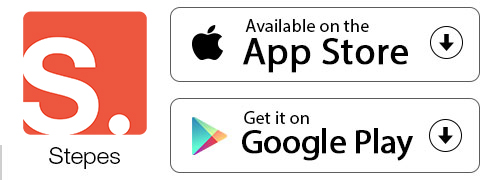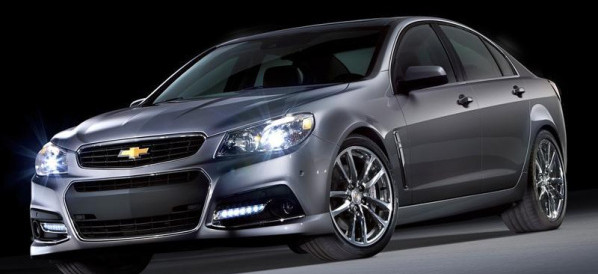 5 Terms
5 TermsHome > Terms > English (EN) > body
body
Is there an “American body”? Foreigners visiting the US often remark on the obesity of an affluent society where one-quarter of children and one-fifth of adults are overweight.
Parents of teenagers worry about skinny female actors and models who may force daughters into eating disorders, or the dangers of steroids or violence for their sons.
Medicine and Hollywood stress fitness—the chiseled, toned bodies of both male and female stars in the 1990s make romantic leads of the 1950s look flabby to young audiences. Yet, are the bodies of advertising, film or Playboy “typical” or “real”? Is the body more like a machine (a common American trope in the twentieth century) or do we read it in more complex ways? Whatever body an American has and however he or she feels about it, the body remains a fundamental site of identity pleasure, anxiety representation, conflict and change. This article suggests linkages through the body with issues discussed at greater length elsewhere.
The body after all, is where issues of race and gender are marked by appearance more than genetics (hence, issues of “passing” for white or cross-dressing and transsexual identities play upon the body). American phenotypic ascription of race is immediately read from the body imposing biology on it. Gestures and fashion may distinguish racial and ethnic groups, at least in common stereotypes—Asians are “quiet,” while Italian Americans “talk with their hands.” Race and ethnicity are also demarcated by hair— whether “good” or “bad” hair among African Americans or the pervasive influence of a northern European blond coloring in mass media (although one faces contradictory images of “blondes having more fun” and “dumb blondes”).
Gender is also affirmed by differences in fashion and ornamentation of the body as well as appropriate “behavior” and activities in sports, war or other arenas. This is particularly true in clothing and exhibition of the body although variations in costumes like swimwear illustrate vast differences in attitudes towards appropriate display often with an underlying puritanism about revealing body parts associated with sex and desire.
Nude beaches and skimpy beachwear are less common in the US than in Europe; the US has also continuing debates over the appropriateness of breastfeeding in public.
Gender also shapes American alterations and manipulations of the body including widespread circumcision for American males, body piercing (especially ears for women), tattooing, with a faddish appeal in the 1990s, dyeing hair, depilation and various forms of plastic surgery now found among men and women, young and old. Cleanliness and avoidance of odor (except for appropriate perfumes), introduced in childhood as demands on girls more than rough-and-tumble boys, also form part of general body culture in contemporary US culture. These, too, are areas of anxiety in which advertising and media portray “the good body”.
Gender and sexuality issues also have raised important questions of privacy and control of the body in the postwar period with regard to contraception and, above all, abortion—a point over which men and women have fought for decades about control of a woman’s body and her right to make choices. Feminism has often argued the need for women to reclaim control of their bodies, as the title of a popular health manual—Our Bodies, Ourselves (1973)—evoked. Gay sexuality has also raised issues, cultural and legal, about rights to do with one’s body as one chooses and where one may do this—the bedroom, the bar, the dance floor or the street. Other issues of body and privacy have emerged in terms of medical records and surveillance, especially in an Internet/information society.
Class is less clearly marked in the body in postwar America (although it converges with markings of race and ethnicity), although there are strong correlations of obesity and poverty Images of class and clothing—“white collar” (middle class) versus “blue collar” (working class) or redneck—remind us of the complexities of these markers and divisions in American society These issues all converge in issues of activities by and on the body especially violence.
The body is part of sanctioned violent activities, especially for men in sports and war, where it endures the demands and sacrifice of citizenship. Women have made gains in participation in same-sex contact sports, although their roles in combat and other areas of bodily threat (police) may still be debated in any crisis in which a woman is hurt.
Violence against women by men, whether domestic abuse or rape, has been a major issue for debate over the rights of the gendered body in the 1980s and 1990s.
The body is also a site of aging, leading to specific concerns in development and activities through the life cycle. The “rights of the fetus” have become part of the abortion debate as well as medical experimentation. Babies and children are closely monitored in terms of normal development, while teenage years are often characterized by a disjunction between bodily changes and social control. Bodies of children and teenagers, however, also demand particular protection in terms of potential exploitation in pornography and sex, themes constantly driven home by mass media.
With maturity diet, fitness, cosmetics and plastic surgery become elements in a battle against aging that affirms the primacy of the youthful, trim body as an American ideal, especially since the rise of the baby boom (see American Beauty, 1999). While older models appear in advertisements and women past fifty have been featured in Playboy, they represent exceptions or appeals to particular audiences. In the US, old age is deeply associated with the failure of the body and with medical efforts to sustain its function.
Aging, gender and other representations and experiences mark the body as a site for medicalization—expert knowledge and rights to control actions. Here, interventions range from curing to manipulation to insistence on Cesarean births rather than “natural” childbirth to proscriptions on bodily activities like smoking in the name of general health.
Medical research has also probed the frontiers of the body in genetic research, transplant/replacements and questions of reproductive technology while staking claims via patents on “body parts.” Emily Martin (1994) and others have highlighted these changing metaphors of the body and their wider implications.
- Part of Speech: noun
- Synonym(s):
- Blossary:
- Industry/Domain: Culture
- Category: American culture
- Company: Routledge
- Product:
- Acronym-Abbreviation:
Other Languages:
Member comments
Terms in the News
Billy Morgan
Sports; Snowboarding
The British snowboarder Billy Morgan has landed the sport’s first ever 1800 quadruple cork. The rider, who represented Great Britain in the 2014 Winter Olympics in Sochi, was in Livigno, Italy, when he achieved the man-oeuvre. It involves flipping four times, while body also spins with five complete rotations on a sideways or downward-facing axis. The trick ...
Marzieh Afkham
Broadcasting & receiving; News
Marzieh Afkham, who is the country’s first foreign ministry spokeswoman, will head a mission in east Asia, the state news agency reported. It is not clear to which country she will be posted as her appointment has yet to be announced officially. Afkham will only be the second female ambassador Iran has had. Under the last shah’s rule, Mehrangiz Dolatshahi, a ...
Weekly Packet
Language; Online services; Slang; Internet
Weekly Packet or "Paquete Semanal" as it is known in Cuba is a term used by Cubans to describe the information that is gathered from the internet outside of Cuba and saved onto hard drives to be transported into Cuba itself. Weekly Packets are then sold to Cuban's without internet access, allowing them to obtain information just days - and sometimes hours - after it ...
Asian Infrastructure Investment Bank (AIIB)
Banking; Investment banking
The Asian Infrastructure Investment Bank (AIIB) is an international financial institution established to address the need in Asia for infrastructure development. According to the Asian Development Bank, Asia needs $800 billion each year for roads, ports, power plants or other infrastructure projects before 2020. Originally proposed by China in 2013, a signing ...
Spartan
Online services; Internet
Spartan is the codename given to the new Microsoft Windows 10 browser that will replace Microsoft Windows Internet Explorer. The new browser will be built from the ground up and disregard any code from the IE platform. It has a new rendering engine that is built to be compatible with how the web is written today. The name Spartan is named after the ...
Featured Terms
Chevrolet SS
The Chevrolet SS utilises the 6.2 L V8 engine from the Corvette, with power and torque figures of 310 kW (420 hp) and 563 newton metres (415 lb·ft). ...
Contributor
Featured blossaries
Browers Terms By Category
- Misc restaurant(209)
- Culinary(115)
- Fine dining(63)
- Diners(23)
- Coffehouses(19)
- Cafeterias(12)
Restaurants(470) Terms
- Hand tools(59)
- Garden tools(45)
- General tools(10)
- Construction tools(2)
- Paint brush(1)
Tools(117) Terms
- Industrial automation(1051)





